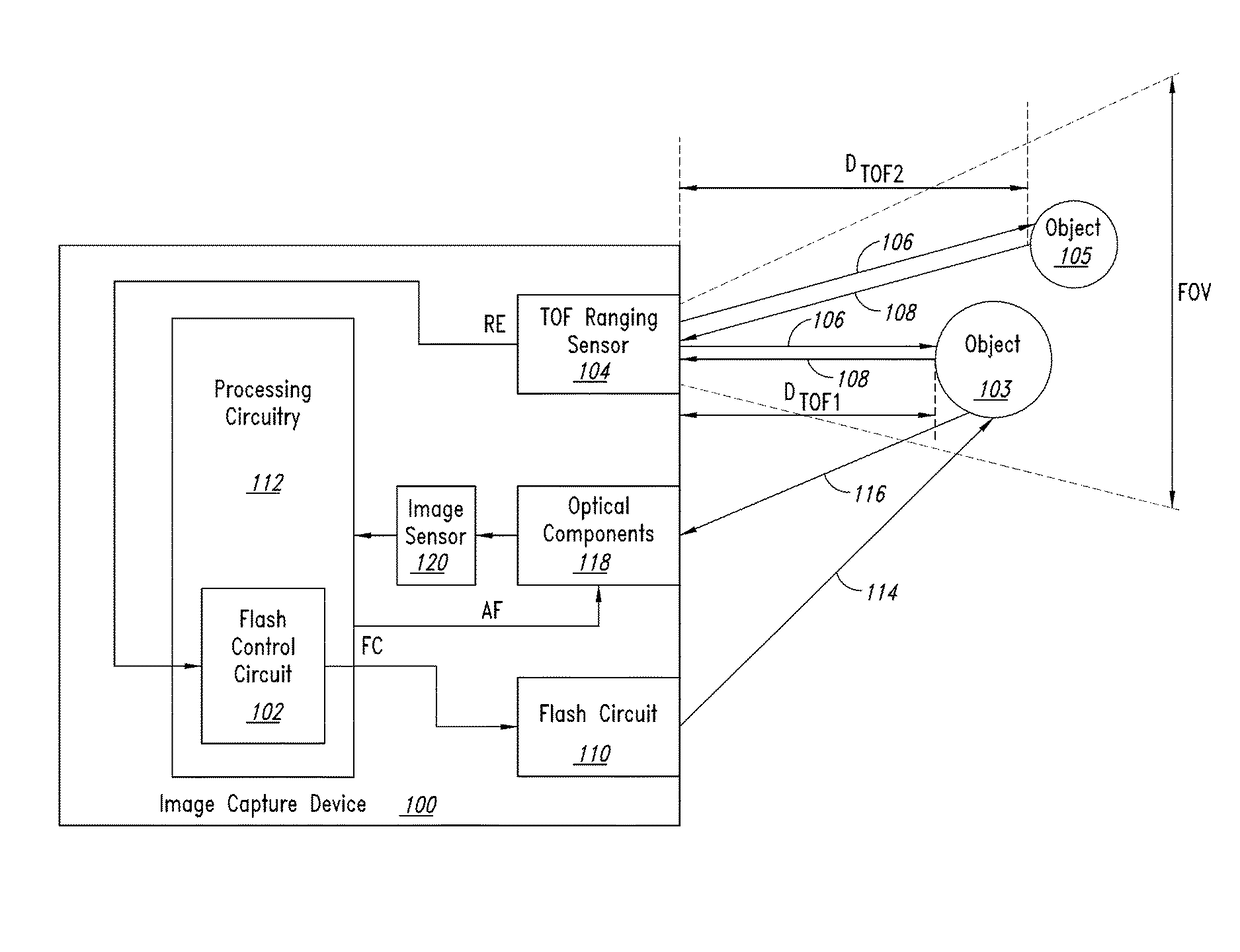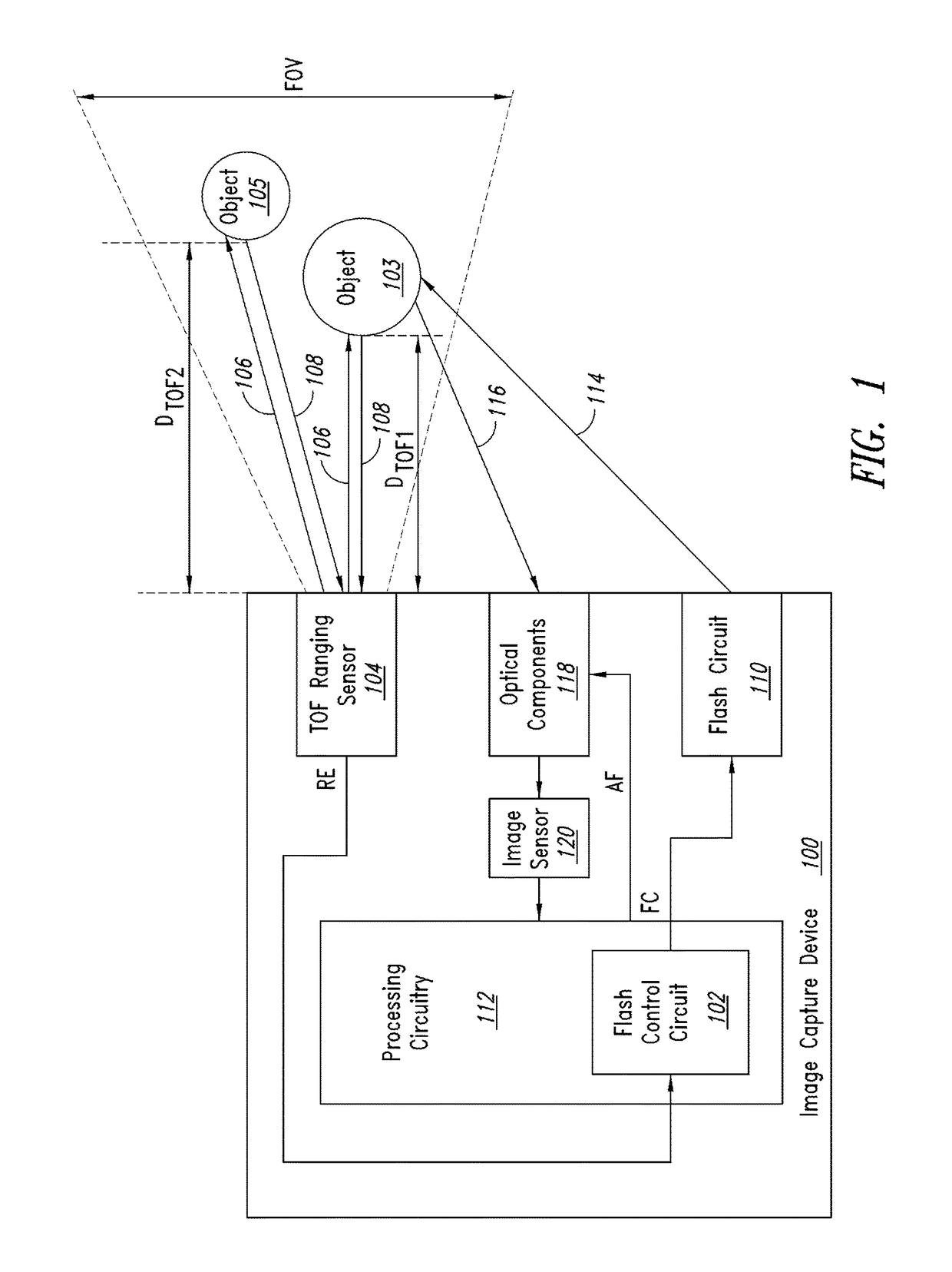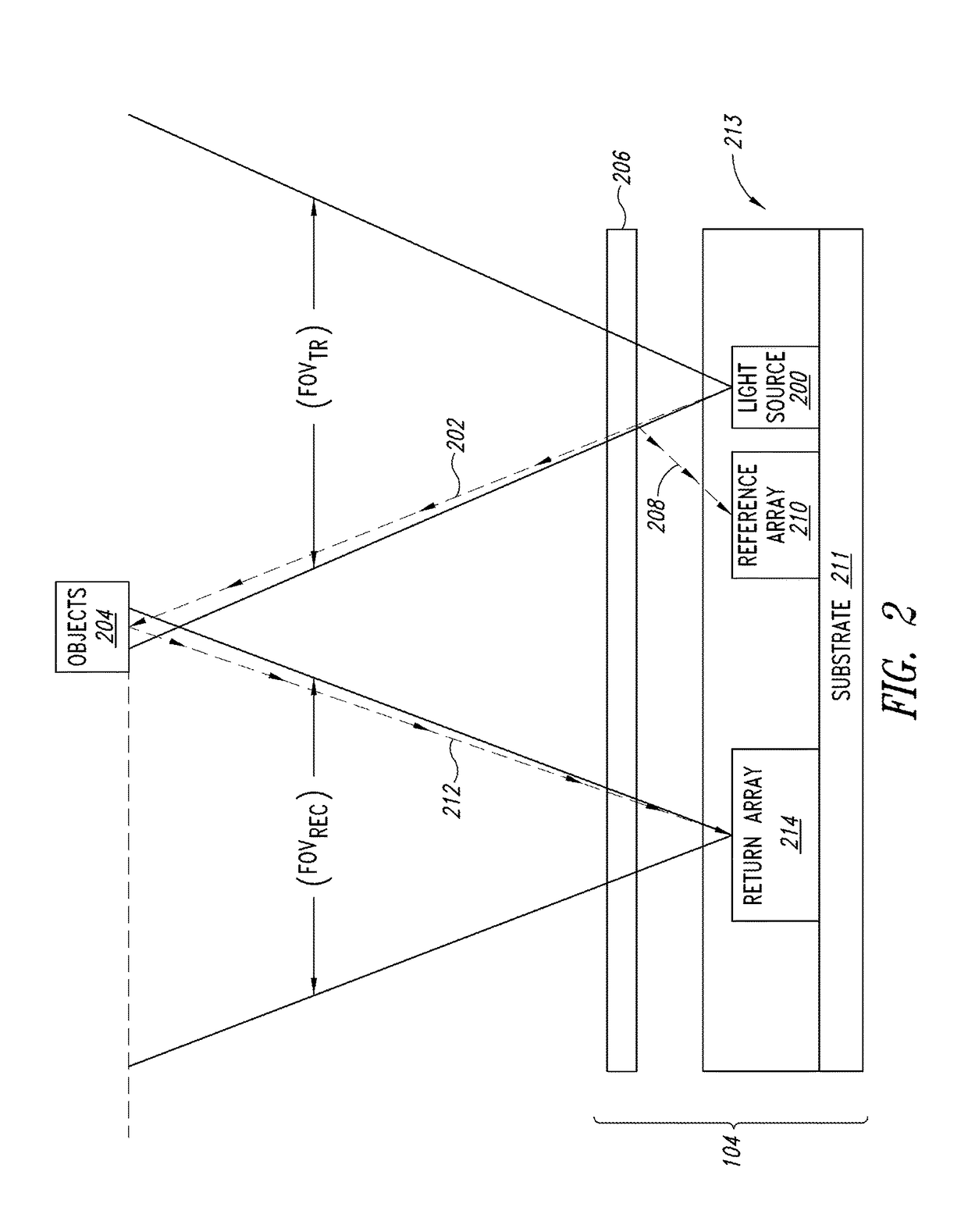Time of flight ranging for flash control in image capture devices
a technology of image capture device and time of flight range, which is applied in the direction of color television details, instruments, television systems, etc., can solve the problems of captured image being “washed out, object being too dark in the captured image, and unnecessary activation of flash devices
- Summary
- Abstract
- Description
- Claims
- Application Information
AI Technical Summary
Benefits of technology
Problems solved by technology
Method used
Image
Examples
Embodiment Construction
[0016]FIG. 1 is a functional block diagram of an image capture device 100 including flash control circuitry 102 that controls flash illumination of objects 103 and 105 being imaged based upon sensed distances DTOF1 and DTOF2 between each of the objects and the image capture device according to one embodiment of the present disclosure. A time of flight (TOF) ranging sensor 104 transmits an optical pulse signal 106 that is incident upon the objects 103 and 105 within an overall field of view FOV of the TOF ranging sensor. The transmitted optical pulse signal 106 reflects off the objects 103 and 105 and portions of the reflected pulse signals propagate back to the TOF ranging sensor 104 as return optical pulse signals 108. The TOF ranging sensor 104 determines the ranges or distances DTOF1 and DTOF2 between each of the objects 103, 105 and the image capture device 100, and the flash control circuitry 102 thereafter controls flash illumination of these objects based upon these determine...
PUM
 Login to View More
Login to View More Abstract
Description
Claims
Application Information
 Login to View More
Login to View More - R&D
- Intellectual Property
- Life Sciences
- Materials
- Tech Scout
- Unparalleled Data Quality
- Higher Quality Content
- 60% Fewer Hallucinations
Browse by: Latest US Patents, China's latest patents, Technical Efficacy Thesaurus, Application Domain, Technology Topic, Popular Technical Reports.
© 2025 PatSnap. All rights reserved.Legal|Privacy policy|Modern Slavery Act Transparency Statement|Sitemap|About US| Contact US: help@patsnap.com



